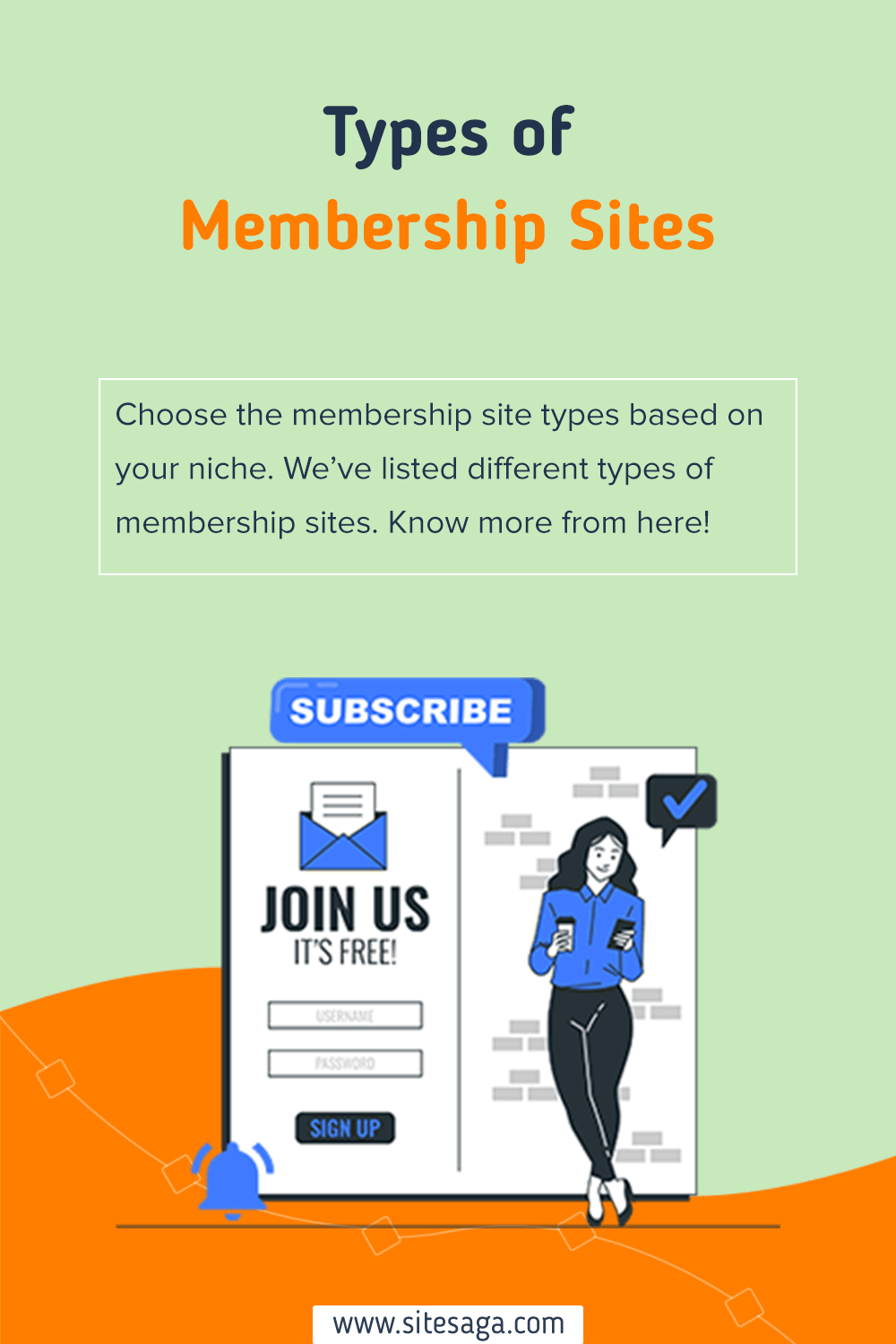Do you want to know what the different types of membership sites are? If yes, then this is the best place for that.
Many of us may think that the technical aspect of starting a membership website makes it difficult. However, the truth is that most people get stuck even before that.
The thing that bothers lots of people is coming up with an idea of what type of membership program to build.
If you’re overwhelmed by the types of membership sites, then don’t worry! In this article, we’ll go through some of the different types of membership sites that have become popular in recent times.
So, let’s begin!
What is a Membership Site? – Overview
A website known as a “membership site” offers members who have paid access to its unique products and services. In it, visitors often register and pay a recurring fee to access the site’s content.
Like online courses, tutorials, ebooks, or coaching sessions, membership sites can provide a variety of content and services. The offered content typically focuses on a certain niche or type of content. Indeed, most of the members of the site are often passionate about that content.

One-time payments for lifetime access, tier systems with multiple levels of access – monthly or annual subscription models for membership sites. Some membership websites could also provide free content to visitors to draw in more subscribers.
Authors, company owners, and entrepreneurs also like these kinds of websites. By offering value to their audience in exchange for recurring income, they may monetize their skills and knowledge.
Additionally, they’re well-liked by customers who are willing to pay for premium, exclusive goods and services.
Why is a Membership Important for Your Business?
A membership site is an essential tool for developing a following of devoted customers and raising sales for your company. Here are some justifications as to why membership is crucial for your company:
i. Customer Retention
Membership programs encourage business by providing members with exclusive prices and privileges that are not available to non-members. Customers are more inclined to continue making purchases from your company if you offer these incentives.
ii. Consistent Cash Flow
As clients pay a recurrent charge to maintain their membership, memberships can give your company a consistent source of income. This can assist your company in estimating future revenue and preparing properly.
iii. Increased Customer Lifetime Worth
Members are more likely to make repeat purchases, which increases their worth to your company over time. You may entice members to make long-term purchases from your company by providing special benefits.
iv. Better Customer Data
Through membership programs, businesses may get useful consumer information like demographics, purchasing history, and preferences. To fulfill the demands of your customers, you can utilize the information to customize your marketing strategies and product offerings.
v. Increased Customer Engagement
A stronger sense of community among customers can be fostered by membership. Hence, it can boost their involvement with your business. Members are more likely to feel committed to your business if you offer exclusive material and other incentives.
In conclusion, a membership program can be a useful tool for any size business. It helps to raise income, foster customer loyalty, and enhance consumer interaction and data collection.
What Should a Membership Site Have?
A website that provides members-only access to special material, goods, or services in exchange for a fee or subscription is known as a “membership site”. There are several crucial components you need to think about to establish a successful membership site, such as:
- Valuable Content – Content that is important and pertinent to your audience should be available on your membership website. This might include books, guides, movies, podcasts, and other kinds of media.
- Membership Tiers – By providing various membership tiers, you can reach a bigger audience and offer more specialized products and services. Provide free, fundamental, and premium membership tiers, each with its unique set of advantages.
- Payment Processing – To collect membership payments, your website needs to be integrated with a safe and dependable payment processing system. PayPal, Stripe, and other payment gateways are popular choices.
- User Management – You should be able to manage and keep track of user accounts on your membership website. It should include registrations, cancellations, and account updates.
- Community Features – Fostering a sense of belonging among your members will help you retain more of them. Think about including forums, message boards, and other social features on your website.
- Support Resources – By offering support materials like FAQs, guides, and customer service channels, you can keep your subscribers satisfied and interested.
- Reporting and Analytics – Understanding what is working and what is not on your site requires tracking its performance, user interaction, and income. To measure important metrics and make data-driven decisions, use analytics and reporting tools.
A successful membership website should deliver value to its users while also being simple and entertaining to use. You may build a membership site that satisfies the needs of your target market with your company objectives.
Now, let’s check out the types of membership sites we love!
11 Types of Membership Sites
Depending on your goals, there are a lot of different types of membership sites you can choose from.
Here are some of the most common types of membership sites.
1. Drip Feed Content
Drip content is a strategic process of releasing a small section of content steadily over time. This means that instead of offering whole content at once, you schedule the content to be released at the chosen time.
In fact, it’s a business strategy built on subscriptions, where users pay a regular sum to access content or services. They receive these contents throughout time, usually at a steady pace or at predetermined intervals.
In this concept, rather than releasing everything at once, contents are “dripped” or delivered to members over time.
Moreover, it enables the business to continue engaging with its customers. Hence, by providing them with a constant stream of value throughout their membership. Thus, it also adds the liability of holding them as customers for a longer period.
For instance, a business can provide online courses with a membership model that drip-feeds content. Instead of making the entire course available at once, they can release the information in daily or yearly installments.
Additionally, this strategy can keep members interested in and dedicated to the course. Also, it increases the perceived value of the content by making it feel more exclusive or premium.
2. All-in-One Subscriptions
Unlike a drip feed model, this type of membership site gives your members access to everything behind your paywall immediately.
This membership is almost the opposite of the drip feed model we just discussed. It’s great for those impatient members who want to pay one flat fee to access all your content every month.
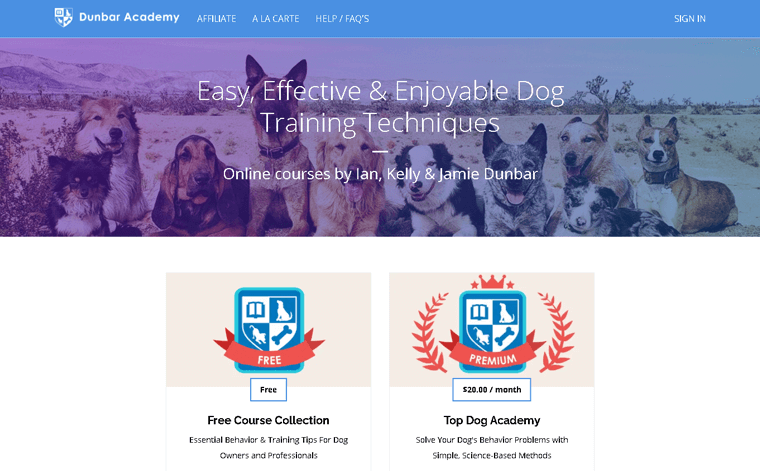
Once you’ve purchased the whole membership, you can go through its contents as you want. The best part is you get access to all of a course, all of a product, or more, as soon as you sign up.
Coming down to the pricing. This type of membership site will charge you the fee on a monthly payment basis. Whereas in some cases, they even charge a fixed upfront fee.
Similarly, to work smartly around it, you must provide monthly bonus content or more. In this way, it’ll encourage your members to stay with you for a longer time.
Or else, they might simply download all of your content and cancel their membership straightaway.
Additionally, such types of membership sites allow you to easily predict revenue growth by member growth. As all the members in your memberships are paying the same amount.
List of Examples:
- Dunbar Academy – Offers online training courses to teach the owners how to train their dog in the best possible manner.
- Membership Academy – Offers in-depth courses and training for running and growing a successful membership website.
3. Fixed Membership
As the name suggests, this type of membership site comes with a fixed membership period. In it, you can set up a membership period of anything from one day to 12 months.
Once the designated period ends, it’ll automatically close the commitment and membership of your users.
The very best example of it would be online training programs and challenges introduced by gyms/yoga centers and educational institutes. For instance, health and body sites can set up a 30-day body detox program. Or an online tutor site can launch a 12-month program to improve memory.
However, don’t confuse it with the online course model. Indeed, unlike the online course model, it doesn’t have a course structure for the information provided.
Similarly, when enrolling into such types of membership sites, you’ll have to make full payment in advance or in installments. The decision is up to you.
Indeed, you need to understand that once the membership period is over, you may or may not have lifetime access to the information.
In fact, the best thing about such a type of membership model is that users know when exactly the membership period ends. Based on that period, members can wisely and efficiently work on their membership model.
4. Freemium Model
In this type of membership model, you’ll get the benefit of both free and premium options in one model. Thus, it allows members to sign up for a free trial before purchasing a premium subscription.
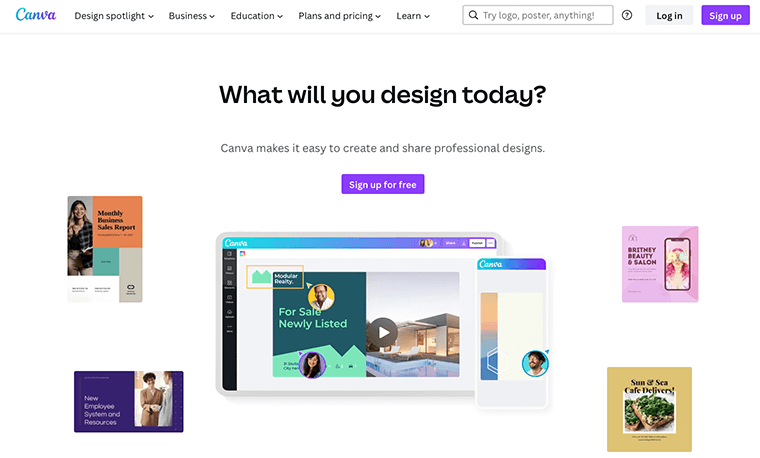
Great for indecisive members. Those who hesitate to buy the premium plans at first can sign up for the free plan. When starting on a free plan, they’ll get access to some features. But not all the features your membership offers are reserved for premium members.
Even more, the members who’ve enrolled in a free plan will switch to a premium plan. Once they’ve seen the value in your membership, they’ll switch to the premium plan.
In comparison to the all-in-one model, it works better for memberships that have several different kinds of content being shared. In this way, it makes it easier to segment what is free and what is paid.
Hence, if you want to cater to such types of members then, then the freemium model is the one for you.
List of Examples:
- Spotify – It’s a music streaming app. In its free version, you get constantly bombarded with Spotify-supported ads. For ad-free music, you need to buy one of its subscriptions.
- Dropbox – A popular cloud storage provider. Offers its new users 2 GB of free storage when they sign up.
- Canva – A free-to-use online graphic design tool with the best alternative to Adobe Photoshop. However, to unlock advanced features, you need to pay $54.99/year for a Pro plan.
5. Online Course
Many find it comfortable to develop their skill or learn about an area of interest from the comfort of their home. Keeping this in mind, online courses are one such popular type of membership site.
This type of membership site is popular for running online courses, tutorials, training, and more. It allows you to keep your courses safe behind a private and pay membership wall.

In fact, when offering courses to your members, you could offer whole courses immediately after at once. Or else, you’d follow the drip feed module where you can release course content one at a time.
Running an e-learning membership site always comes with its own challenges. You should be able to make your members engaged and entertained on your site.
Therefore, you should include regular assignments, quizzes, and other activities to keep their interest in your course. Indeed, you can set a rule that they must complete the tasks before the next lesson is released.
Additionally, when selling your courses, you can sell them at a fixed price. But you can provide the option to pay the full fee upfront or every month.
List of Examples:
- Coursera – Popular online education platform to learn job skills from industry leaders like IBM, Google, etc.
- Udemy – Offers more than 213,000 courses from web development to public speaking, they offer a broad range of courses.
- LinkedIn Learning – This comes with a single monthly subscription fee that gives you access to all the content on the platform. Best known for its software development, business, leadership, marketing, etc.
6. Coaching and Mentor Membership
This is a model that provides individuals with proceeding support and advice from a trainer or tutor. It involves a recurring subscription-based service.
Hence, it allows individuals to access regular coaching or mentoring sessions with a skilled professional.
In this model, the trainer or tutor provides personalized guidance to help the individual achieve their particular or professional plans. This could include developing new skills, building self-confidence, or steering a career transition.

Indeed, it involves regular meetings or sessions, either in person or virtually. Here, the trainer or tutor provides advice, support, and feedback. The membership model provides individuals with ongoing access to this support, rather than a one-time engagement.
The coaching and mentor membership model offers ongoing assistance, liability, and motivation. It can assist people in maintaining their goals in mind, overcoming obstacles, and succeeding in both their personal and professional lives.
Members gain regular access to coaching and mentoring services. Besides, it’s a community of people who share their interests and are working toward the same objectives.
List of Examples:
- Natalie Bacon – Natalie is a certified life coach with a community just for moms. Offer lessons in mindfulness, allowing for a better life due to that awareness.
- Coaching by Carrie – A go-to membership site for actors and vocalists looking to perfect their vocal and performance skills.
- Body by Amanda – From the creator of Body by Amanda, it offers coaching in nutrition and training.
7. Online Community
In the online community membership model, you buy access to the community, instead of buying products or content.
There is an increasing number of social websites booming in today’s day of time. For that, having some kind of community element to your website is always great.
Hence, it allows the members to network and work together on the goals your site is helping them achieve. In fact, with WordPress, you can easily build community-based membership websites.

Even more, you can include an online community that works well with any of the other kinds of memberships. Indeed, it’s one of the best ways to connect members and build engagement.
However, with this model, the site owner can charge a fee to access member content, private groups, forums, etc. Also, a member can get full access to the online community for as long as they remain paying members.
Meanwhile, when it comes to monetizing a community, it might look vague. As you can find plenty of free options spread out on the internet. Thus, an online community comes to great value if you can build a niche-based community.
Therefore, you must build up a solid community of a few thousand members. This will guarantee that you can stick around for long periods. After all, who doesn’t like to be surrounded by a community of like-minded people?
List of Examples:
- Discord – Popular within gaming communities, an instant messaging platform with support for voice calls, video calls and chats.
- Vanilla Forums – An online community platform that makes it easy for your brand to collaborate with their customers, build loyalty, and boost engagement.
- Long Exposure Photography – A photography community-based niched membership model. Best known for building a strong community of passionate photographers for image sharing and feedback.
8. The Publisher Model
In this, a publisher of a particular kind of digital material provides access to the content through a membership-based subscription service. Users pay a regular charge to access the publisher’s content catalog under this approach.
To entice people to sign up as members under this model, publishers frequently provide unique content, early access, or ad-free experiences. Additionally, some publishers could provide perks like specials on goods or tickets to events.

Since traditional advertising revenue methods have become less dependable, the Publisher Membership Model has grown in popularity. Publishers can generate a source of income that is more reliable and increase their consumer base by relying on subscription fees.
Moreover, publishers can build a devoted reader base who are prepared to pay for in-depth news and other content by providing readers with a membership program.
Publishers can also encourage a sense of community and involvement among their readers by offering members-only benefits and exclusive content. This can assist to increase brand loyalty and boost traffic to publishers’ websites.
The New York Times, The Washington Post, and The Guardian are a few publishers that follow this technique.
9. Entertainment and Video Streaming
Another subscription-based concept is membership for streaming media and entertainment. Through a streaming platform, it enables users to access a wide range of entertainment content, such as films and TV series. For access to the content, customers must pay a monthly or annual fee.
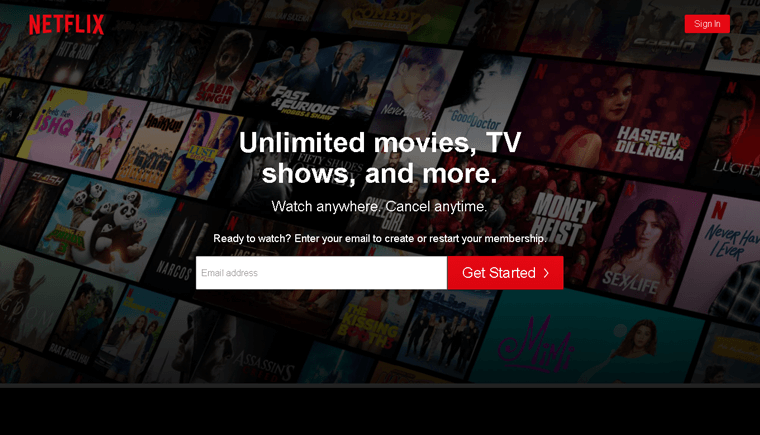
As streaming services have grown in popularity, this paradigm has become more and more common. Such as Disney+, and Netflix. They provide a variety of content that customers may access on demand without having to make a bulk purchase.
Both the streaming provider and the user gain from the membership model. The streaming service provides a steady stream of profit and allows them to invest in creating new content.
Meanwhile, the users provide a practical and affordable option to access a huge library of material. In general, this approach has transformed how we consume entertainment, making it more available and affordable than ever before.
List of Examples:
- Netflix – A widely popular online streaming platform that provides access to a number of TV shows, movies, documentaries, etc.
- Hulu – Owned by the The Walt Disney Company, it’s a subscription streaming service that offers live stream TV, movies, and shows.
10. Product Model
Using the product membership model, a business gives its clients access to a product. Typically, monthly or yearly recurring fees are paid by members.
Customers use this model to pay a price to access a good for a set amount of time. In fact, it might provide various membership tiers with distinct features and advantages.
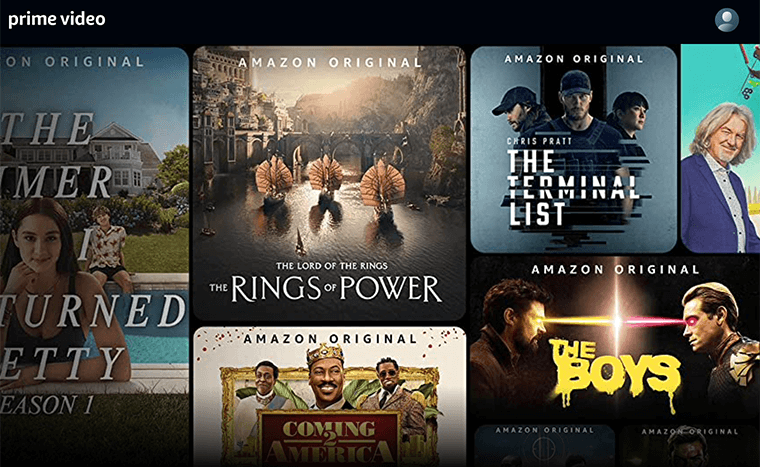
The product could be digital or physical. As a result, it might include services like software, magazine, gym memberships, and more that are offered regularly.
This strategy offers businesses predictable revenue, improved customer retention, and elevated consumer loyalty. Meanwhile, customers gain from the convenience of continuing access to a product.
Examples of companies that use the product model include Amazon Prime, Spotify, and Adobe Creative Cloud.
11. Service Model
In the service membership model, the business provides its services to clients via a membership program based on subscriptions. Customers in this case pay a set fee regularly (monthly, quarterly, or annually). Then, they can access several services offered by the business.

Due to the numerous advantages, it provides for both the customer and the business, this model is becoming increasingly popular. Customers get access to a range of services for a fixed price. As a result, it’s less expensive than paying for each service individually.
Likewise, companies benefit from a predictable revenue stream, which helps with financial planning and forecasting. Additionally, it can be a convenient and cost-effective way for customers to access the services they need. As it can save money compared to paying for individual services on an ad-hoc basis.
Examples of service membership type models include membership-based gyms like Planet Fitness, and Software-as-a-Service (SaaS) businesses like Microsoft Office 365.
Do you want some inspiration to build your membership site? If so then check out our article on the best membership site examples for inspiration.
Conclusion
And it’s the end, guys! So, in this article, we’ve covered the different types of membership sites in 2023. We hope you liked it!
Moreover, based on your skills and niche audience, you can choose the perfect type for your membership site.
Please feel free to comment below if you have any further queries about the types of membership sites. We’ll do our best to respond as soon as we can.
Also, let us know which membership type you are going to choose from the list. You can share your top favorite pick in the comments section below.
On top of that, you can also read some of our helpful articles on the best membership website builder platforms and the best free WordPress membership plugins.
If you liked it, then follow us on Facebook and Twitter for similar types of content.

